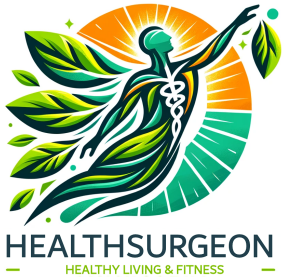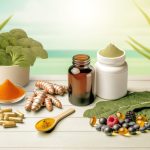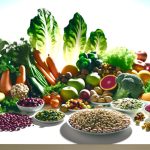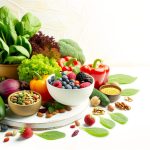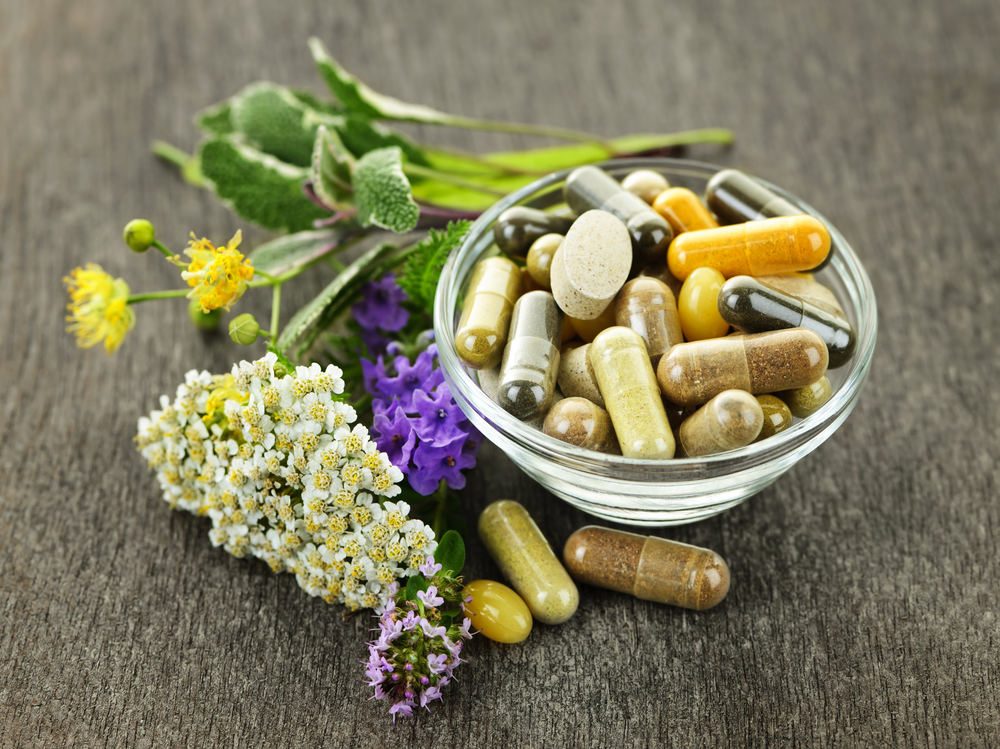Detox. The goal is to cleanse the body of harmful substances, often called toxins by the means of a restricted diet composed of specific food (with the choice of buying supplements). Some detox programs are focused on cleansing specific organs, while others claim that they will purify you completely from the head to the heels.
Detoxification is very limiting. Foods are limited to fruit and vegetable juices, or other approved drinks. Master Cleanse prescribes 6-12 cups of lemonade with maple syrup and cayenne pepper daily. That should be drunk every day as only one nutrition to get rid of toxins from your body and according to the author of this purification, it supports the elimination of all diseases.
Briefly, detoxification diets are built on the presumption that the human body can hang on to toxins and metabolic waste from the exposure to pesticides, various polluting, and additional substances in food.
What Is A Toxin?
According to detoxification gurus, the food which causes “toxic congestion” belong to milk products, gluten products, coffee, alcohol, and red meat. But tomatoes, peppers, and eggplants do not belong to this group because there is (mistakenly) a claim about them that they cause inflammations. Detoxifications and purifications promise that will give your body a break from processing all these toxins.
Toxins and toxic substances cover a wide range of substances.
Any substance can be toxic depending on the amount if over consumed.
Toxins can also be poisons produced by humans in the environment, usually due to pollution.
About detoxifications, “toxin” is any substance that is supposed to be toxic or harmful including heavy metals, polluting substances, pesticides, preservatives, or food additives such as food industry colors, corn syrup with high content of fructose (HFCS), and other synthetic chemicals.
Despite that breathing pesticides or drinking polluted water is harmful to your health, that can’t be said about all synthetic additional substances or modifications. Instead of fear, let’s take a look at what can be improved by nutrition.
Measuring Toxicity
The natural or synthetic forms or any other substance can be harmful – it depends upon various factors:
- For example, cocoa can be used by people safely but for dogs, it is dangerous due to its content of theobromine.
- Conjugated linoleic acid (CLA)causes fatty liver within mice but not within people.
Dosing is another factor of the impact that must be considered very carefully.
Even water may kill you when you drink too much in too little time because it lowers the concentration of electrolytes needed for muscles (including the heart) and their functioning. Similarly, the same electrolytes which are needed for heart beating, are not always friends of ours. In the USA the recommended daily dose (RDA) is 4,7g for adults. When the same amount of calcium is consumed by the means of food, it is digesting for several hours which is not only safe but also healthy. However, only 1 gram of pure calcium consumed on an empty stomach with or without water, may hurt the health and that is why multivitamins and sports drinks are limited only to 99 mg (0,099g).
But some substances are not always bad, aren’t there? For example, tobacco or alcohol? The answer is yes. For tobacco. But alcohol isn’t that evil. While the increased amount can lead to cirrhosis and increased risk of cancer, the little amount can provide little health benefits (protects from coronary heart diseases).
What about the modern devil, high-fructose corn syrup (HFCS)? While it is synthetic, this compound is compositionally familiar to sugar. Sports drink after training or occasional dessert is fine but when you will be consuming many of the HFCS or sugars to generate an abundance of calories, there is the possibility of health problems resulting from the increased weight.
Some substances can remain in cell tissues which can lead to health problems. It applies mostly to heavy metals. Because fish can contain mercury (a heavy metal with a halftime breakdown within people usually 50 days), some people stopped eating this completely and by this, they lost the supply of omega-3 fatty acids. Eating fish with a lower content of mercury is a good idea.
The remains of pesticides in food is another known problem. Despite that, the Program of documentation of pesticides (PDP) of the US Ministry of Agriculture (USDA) has found that the majority of food on the market contains residue below the approved limits, which were specified by Environment Protection Agency (EPA). In addition, rinsing, peeling off or cooking can lower the number of pesticides that have remained on your food.
What Is Detoxification?
The mechanism by which our bodies deal with xenobiotic exposure is through detoxification, a process strongly influenced by our diets.
Xenobiotics are foreign compounds that include not only drugs but also environmental pollutants, dietary supplements, and food additives.
The concept of “total load” of xenobiotics is very important in determining how effectively the body can handle cumulative exposure to toxins. If the “total load” of xenobiotics exceeds the body’s ability to process and eliminate them, then toxicity can ensue (Bland, 1995).
Types of Detoxification
Detoxification is thought to occur through the major organs associated with elimination. These include:
- Hepatic (liver)
- Renal (kidneys)
- Digestive system (gut)
- Respiratory system (lungs)
- Integumentary system (skin)
Detoxification has become a buzzword among celebrities and some alternative healthcare providers, who promote various products and protocols that are claimed to detoxify and cleanse the body.
Many of these products include botanical laxatives and diuretics, along with herbs that support liver function. Theoretically, these products can stimulate the organs of detoxification and elimination.
Rather than purchasing a detox kit from your local supplement store, online, or from an infomercial (all of which can be pricey and of questionable efficacy and safety), consider examining the foods you eat and the chemicals to which you are exposed to. Use this information to reduce your toxic load by adopting a diet and lifestyle that supports ongoing detoxification.
Approaching detoxification through food and lifestyle comes with the added benefit of reducing inflammation, the underlying mechanism of many diseases.
Liver Support
The body has a very intricate system for detoxing xenobiotics. Within the liver, there are two phases of detoxification. Phase I takes place in the cytosol and involves oxidation, reduction, and/or hydrolysis in an attempt to reduce the toxicity of the chemical.
The second phase (Phase II) of detoxification occurs in the cytochrome P- 450 enzyme system in the membranes of the endoplasmic reticulum, resulting in conjugation. This process attaches a variety of compounds to the chemical, altering its size, polarity, and solubility so that it may be removed from the body (Rogers, 1992).
The Benefits of Phytochemicals for Detoxification
Phytochemicals found in colorful plant foods have been shown to support the detoxification process. The main mechanisms of action of phytochemicals are antioxidant activities, modulation of detoxification enzymes, decreasing of platelet aggregation, alterations in cholesterol metabolism, control of concentrations of steroid hormones and endocrine metabolism, reduction of blood pressure, and antibacterial and antiviral activities.
Some foods high in phytochemicals include cruciferous vegetables (such as cabbage, Brussels sprouts, cauliflower, and broccoli), dark green leafy vegetables (such as kale, spinach, and chard), berries, garlic, ginger, onions, and phenolic compounds found in green tea (Ferrari, 2003) (Kensler, 2005).
A powerful antioxidant called glutathione also plays a critical role in detoxification as a cofactor for many antioxidants, as well as its role in mitochondrial function. Glutathione can be depleted by eating conventional foods that are high in pesticides and insecticides, as well as with alcohol consumption.
Glutathione can be increased by taking supplements such as alpha lipoic acid and N-acetylcysteine (NAC). Interestingly, those who practice meditation have 20% higher levels of glutathione, thus substantiating the mind-body connection and the effect of stress on the body (Pizzorno, 2014).
READ MORE: 16 Purple Vegetables And Fruits You Must Eat
Hydration
You lose water every day through your breath, perspiration, urine, and bowel movements. For your body to function properly, you must replenish its water supply by consuming beverages and foods that contain water.
Scientific studies validating the common recommendation of 8, 8-ounce glasses of water are lacking. According to the Institute of Medicine (IOM), an adequate intake (AI) for men is roughly 3 liters (about 13 cups) of total beverages a day and 2.2 liters (about 9 cups) of total beverages a day for women. Individual needs should be determined based on health status, diet, activity levels, and the environment.
From a detoxification perspective, water theoretically helps by keeping your bowels, kidneys, and other organs functioning better (Valtin, 2002) (Mayo Clinic, 2011). Optimum fluid intake has been shown to prevent certain types of cancer, along with heart disease and other conditions. Other benefits of optimum fluid intake include weight loss, better bowel function, and better glomerular filtration rate (GFR) which can equate to better kidney function.
The Digestive System
The gut has been a major target for those doing a cleanse. Fiber is an essential component of ongoing detoxification and gastrointestinal health. Unfortunately, in general, people eat about half of the 30 to 35 grams of daily fiber that is recommended.
A university of Illinois study showed that dietary fiber promotes a shift in the gut toward different types of beneficial bacteria, such as acidophilus (Hooda, 2012). As these microbes ferment fiber in the intestine, short-chain fatty acids and other metabolites are produced, resulting in many health benefits, including a reduction in the risk for type 2 diabetes, obesity, inflammatory bowel disease, colon cancer, and autoimmune disorders.
Remove
In this phase, one removes the common allergy-producing foods, which for some include gluten and dairy products. A hypoallergenic rotation diet consisting of rice-based products, legumes, fruits, vegetables, fish, and poultry is then followed.
Replace Phase
The body naturally secretes digestive enzymes and acids to break down food. In this phase, the use of digestive aids, such as digestive enzymes, is recommended to be taken with meals.
Reinoculate Phase
To improve intestinal function, probiotics are recommended, along with a prebiotic supplement such as inulin, fructooligosaccharides, or arabinogalactans. Prebiotics are specific food fibers that are used by friendly probiotic organisms as their ‘food” in the intestinal tract to improve their therapeutic value. Examples of probiotics include Lactobacillus Acidophilus and Bifidobacteria.
Probiotics may be valuable in detoxification by increasing Phase II detoxifying enzymes in the body. Some foods containing probiotics include yogurt, kombucha, sauerkraut, and kimchi (Brudnak, 2002).
Repair Phase
Nutrient supplements are used in this phase to promote proper repair of the intestinal lining. These supplements can include the amino acid L-glutamine, pantothenic acid, zinc citrate, omega 3 EPA/fish oil, and vitamin E as mixed tocopherols.
